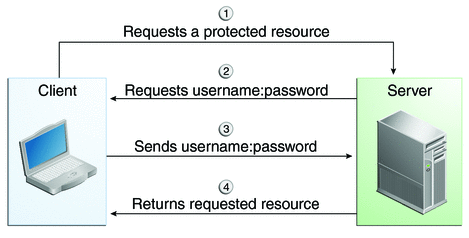Authentication and Authorization in Practice – Chapter 1
December 15, 2018
Authentication and Authorization are an important concepts in any type of software development. Systems over network need a mechanism to allow or deny access to the protected resources.
Basic Authentication
Basic and Forms authentication approaches were sufficient enough if the Resource Owner (or User) wanted to access their own data on a remote server.

